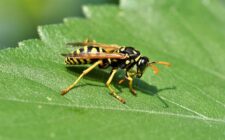The cold winter weather in Algonquin may force rats indoors. These rodents wait out the cold months and survive if they have access to warmth, food, and water. However, they can be damaging and unsanitary once they invade your living space. They can cause chew wires, contaminate food, and spread diseases. Thankfully, homeowners can take steps to keep rats outside. These steps include hiring the best pest control company like Pointe Pest Control. Aside from general pest control, the company offers specialized pest services such as rat extermination. They may recommend the following:
Sealing Entry Points
Rats can find the smallest gaps around a home. They can squeeze through a hole the size of a coin. They can also take advantage of cracks in foundations, spaces around pipes, gaps in siding, or loose weatherstripping. Inspect the exterior of your house carefully before winter. Use steel wool, caulk, or metal mesh to fill small holes. Also, install sturdy door sweeps to block gaps under doors.
Securing Food Sources Indoors
Winter makes rats more determined to find reliable food. They can get what they need from pantries, kitchens, and garages. To reduce temptation, store dry goods in sealed plastic or glass containers. Don’t leave pet food sitting out overnight. Also, keep garbage cans closed with tight-fitting lids.
Eliminating Outdoor Attractions
Outdoor food sources can lure rats close to a property. Bird feeders that spill seed and compost piles provide a steady buffet. Also, they can attack unsecured trash bins. Firewood stacked against the house can be shelter for rats. Moving firewood away from the walls and cleaning up fallen seed reduces the likelihood of rats getting too close. Also, ensure you keep trash tightly sealed.
Addressing Moisture Problems
Rats can hydrate themselves if they have access to leaky pipes, clogged gutters, and standing water in basements or crawl spaces. In Algonquin’s cold winters, they may venture indoors in search of reliable water. That is why homeowners must repair leaks and ensure good drainage. Also, using dehumidifiers in damp areas makes a home less appealing.
Maintaining a Clutter-Free Environment
Clutter provides cover where rats can nest undisturbed. Their nesting spots can include cardboard boxes, piles of clothes, and stacks of old newspapers. They can also be found in basements, attics, and garages. Keeping storage areas organized and off the ground reduces hiding places. Using plastic bins is also essential since rats cannot chew through them as easily.
Trimming Back Landscaping
Rats can use overgrown shrubs, ivy, and tree branches close to your house as natural pathways. Thick vegetation near foundations gives them cover as they look for entry points. By trimming back bushes and keeping grass short, you reduce the places where rats can hide. Also, cut branches that hang over the roof to limit the chance of them climbing and entering through the attic.
Inspecting Attics and Crawl Spaces Regularly
Rats often choose hidden, undisturbed areas such as attics or crawl spaces to set up nests. An infestation can grow without being detected since these spaces aren’t used daily. Inspecting them during winter helps you catch early signs like droppings, gnaw marks, or nesting materials. Also, you can prevent rats from taking over this space by adding light, sealing cracks, and using protective barriers in these areas.
Using Rodent-Proof Materials
The type of material you use matters when you seal gaps or reinforce vulnerable area. Rats can chew through wood, plastic, or low-quality sealants. Choosing rodent-proof options such as metal mesh, steel wool, or cement-based fillers ensures they won’t be able to bite their way back inside. Reinforcing vulnerable areas with these stronger materials adds long-term protection and gives you peace of mind through the cold months.




